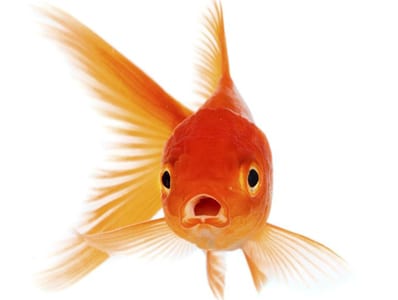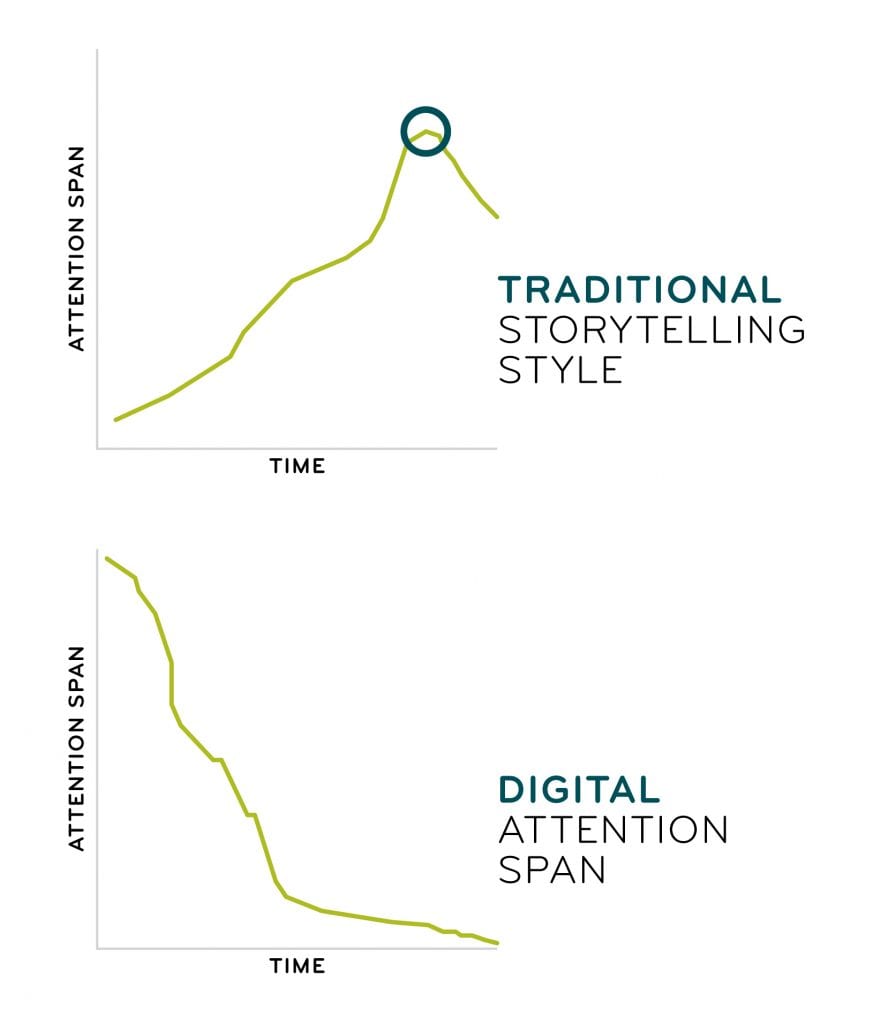 Are attention spans shortening more and more? Do we lack the ability to concentrate on something for more than a few seconds? While it’s not yet scientifically proven that humans have a shorter attention span than goldfish, the “humans have a shorter attention span than goldfish” headline was just too good to pass up, right? Anecdotal evidence would suggest that our attention spans have indeed diminished over the past decade. However, it depends on what medium and the context as to how attention spans are affected.
Are attention spans shortening more and more? Do we lack the ability to concentrate on something for more than a few seconds? While it’s not yet scientifically proven that humans have a shorter attention span than goldfish, the “humans have a shorter attention span than goldfish” headline was just too good to pass up, right? Anecdotal evidence would suggest that our attention spans have indeed diminished over the past decade. However, it depends on what medium and the context as to how attention spans are affected.
To dive in and examine attention spans, we can look at video as the key medium for consumption.
In 2017 we know video is the preferred method of content to engage your audience. But when it comes to video, and particularly attention spans, it’s really important to distinguish that there are two very separate buckets of content:
- Video content that individuals seek out (YouTube searches, Netflix, video on demand etc.)
- Video content that is served to individuals (pre-roll ads, video banner ads, Facebook ads)
By looking at these two different types of content, you can see that consumer attention spans are probably not as black and white as the goldfish analogy.
Binge watching “Stranger Things” on Netflix (content that an individual elects to watch) until the screen pops up asking “if you’re still watching” would demonstrate that attention could be captivated for hours upon hours. Some individuals will also voluntarily watch gamers live-stream for hours; not play the game themselves, just enjoy watching the experience and listening to the commentary and banter.
I think it’s safe to say that, in this context, the attention span of a goldfish doesn’t really hold up.
 When looking at content that is served to individuals (think Facebook ads, promoted tweets, YouTube pre-rolls, etc.) this is where we start to see a really interesting divide in the attention spans. We’re starting to see that it’s becoming increasingly more difficult to engage and hold the attention span of our audiences. Average watch time is generally lower than we would like. Average completion rate of a video is also a much slimmer number than we would hope for. Captivating the audience for 15 seconds could be considered a huge success for a number of campaigns.
When looking at content that is served to individuals (think Facebook ads, promoted tweets, YouTube pre-rolls, etc.) this is where we start to see a really interesting divide in the attention spans. We’re starting to see that it’s becoming increasingly more difficult to engage and hold the attention span of our audiences. Average watch time is generally lower than we would like. Average completion rate of a video is also a much slimmer number than we would hope for. Captivating the audience for 15 seconds could be considered a huge success for a number of campaigns.
So, we have two distinct types of content and two distinct patterns of attention spans. The divide between the two seems to be as large as the Grand Canyon. So how did we bridge this divide?
When we occupy a user’s digital environment and serve them branded content, which they may or may not have elected to see, we’re not able to hold their attention. So that tells us that we need to change the way we convey our information. We need to start thinking more like a content creator, a producer, a writer and less like an advertiser.
Here’s a few ways that you can engage your audience immediately and captivate their attention:
- Design your scripts for drop offs: Make sure you’ve captured the main point, introduced the product, talked about the offer in the first few frames and seconds.
- Don’t follow the traditional storytelling arc: You don’t need to start at the beginning, generating more and more excitement and suspense, until you reach the pivotal point or climax, and then wrap the story up. Experiment with different uses of time and sequencing.
- Inspire emotion: Whether it’s novelty, curiosity, empathy or shock, generating an instant emotional response from your audience will draw them in and capture their attention for longer.
- Don’t go for something familiar: Be unique and different in your opening frames. Take some risks, try some different formats.
- Target: While platforms like Facebook give you the ability to reach mass audiences via Reach and Frequency models, it might also mean you’re casting a really wide net. Try being more targeted with your segmentation and demographics and ensure that those you reach are interested in your messages. Leverage pixels and lookalike audience data.
- Utilize influencers and content creators: We know that consumers love and consume massive amounts of influencer content. How can your brand work with authentic and relevant influencers in a meaningful way? Leverage their audience to help tell your story.
- Be M.A.D.: Or simply… measure, analyze and dissect. Understand what works, what didn’t and why. Feed this information back to creative teams to help them curate more break through content.
At the end of the day there is not one script that all brands can follow to create amazing content that captivates audiences, and holds their undivided attention. However the data is telling us that the traditional storytelling approach does not work, so the best starting place for brands is to change their approach, flip the script on the content and understand that if you’re going to invade someone’s social media space, you better have a pretty compelling story to tell.


